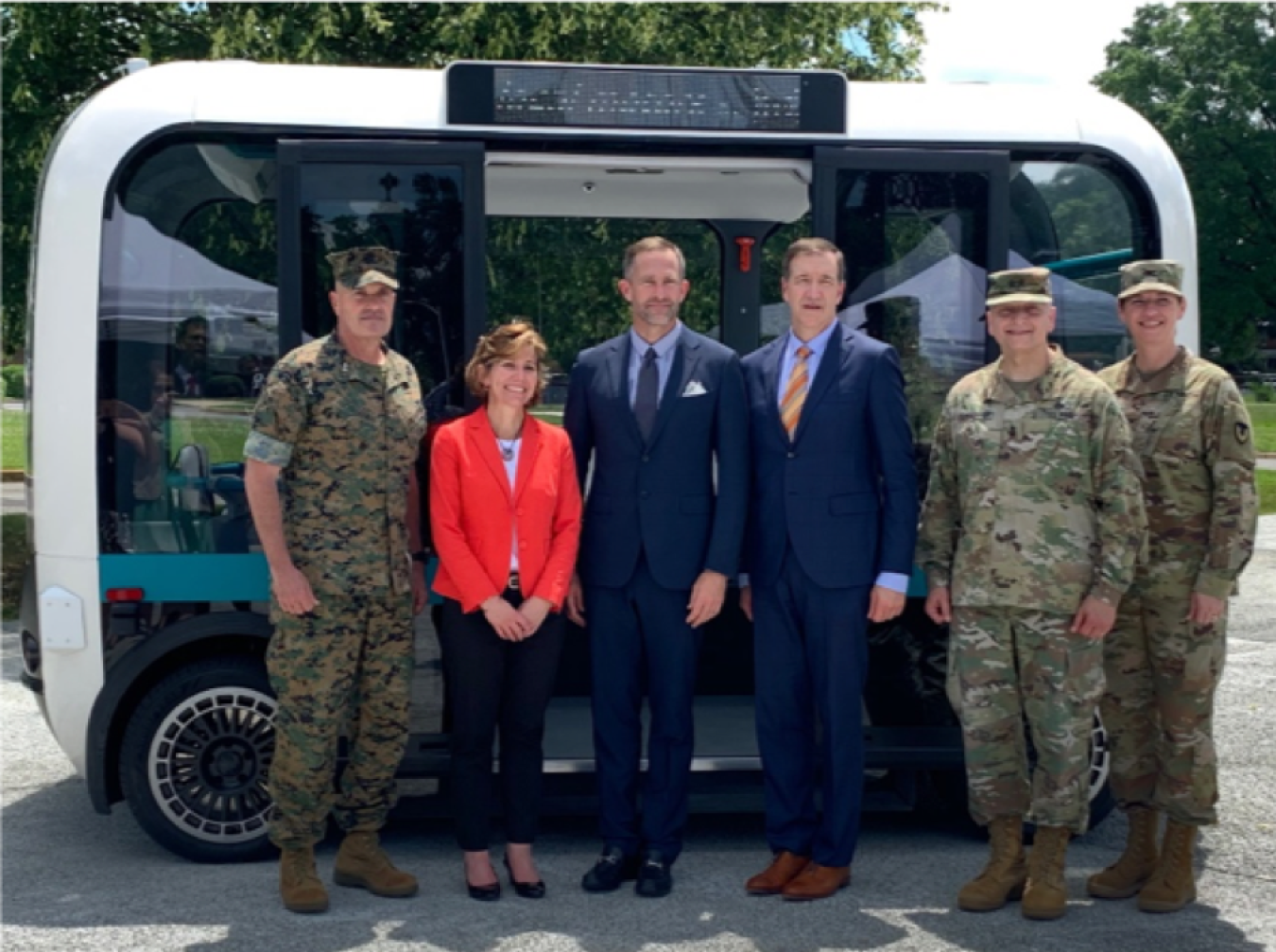
Key collaborators from L-R: Maj. Gen.l Vincent Coglianese, commander, Marine Corps Installations Command; Kathy Mcghee, director of research and innovation for Virginia Department of Transportation; Jay Rogers, chief executive officer, Local Motors; Richard Kidd, deputy assistant Secretary of the Army for Strategic Integration; Maj. Gen. Anthony Funkhouser, commander of U.S. Army Corps of Engineers, Engineer Research and Development Center; and Col. Kimberly Peeples, commander of Joint Base Myer-Henderson Hall. Missing from photo is Peggy Tadej, Northern Virginia Regional Commission.
Lt. Col. Brandon Newell with the U.S. Marine Corps and Richard Kidd, deputy assistant Secretary of the Army for Strategic Integration, teamed up to bring autonomous vehicle technology to the federal government. The two branches collaborated with Local Motors Industries to deploy the Olli autonomous shuttle at Joint Base Fort Myer-Henderson Hall in June 2019.
The fully electric shuttle displaces petroleum and offers significantly improved fuel economy compared to its gasoline counterparts. It can carry eight passengers 25–40 miles on a single 1.5-hour charge. Although it operates autonomously in campus settings and brakes at the sight of pedestrians crossing its line of travel, a human monitors the vehicle’s operation at all times.
Autonomous vehicles have long been Newell’s focus dating back to his time as a fellow at the National Renewable Energy Laboratory. He envisions a future where autonomous vehicles serve the needs of the federal fleet by day and the personal needs of federal employees by night. As the director of technology & partnerships for Installation neXt, a Marine Corps Installations Command program, Newell has piloted various car sharing, ride sharing, and even bike sharing technologies at Marine Corps Air Station Miramar and Camp Pendleton. Myer-Henderson Hall presented the first opportunity to pilot an autonomous shuttle, largely because of the partnership with Kidd and the U.S. Army.
Kidd’s Office of Strategic Integration co-sponsored the Olli deployment at Myer-Henderson Hall and brought the Army’s Engineer Research and Development Center into the alliance. Congress had appropriated funds to the Center to pilot autonomous shuttles, and they were planning to explore a large deployment in Colorado between Fort Carson and Colorado Springs; however, the partnership with the Marine Corps allowed them to test a single vehicle with a small portion of their funding before coordinating the larger Colorado effort.
The shuttle operation will offer lessons to Fort Carson and beyond; however, the first lesson learned from this project is that a partnership between individuals has the power to leverage the federal government into the future of vehicle technology.
For more information, see Lt. Col. Newell’s blog entry at https://medium.com/@brandonhnewell/tales-of-a-collaborative-market-the-autonomous-shuttle-e69df7e1b97.

